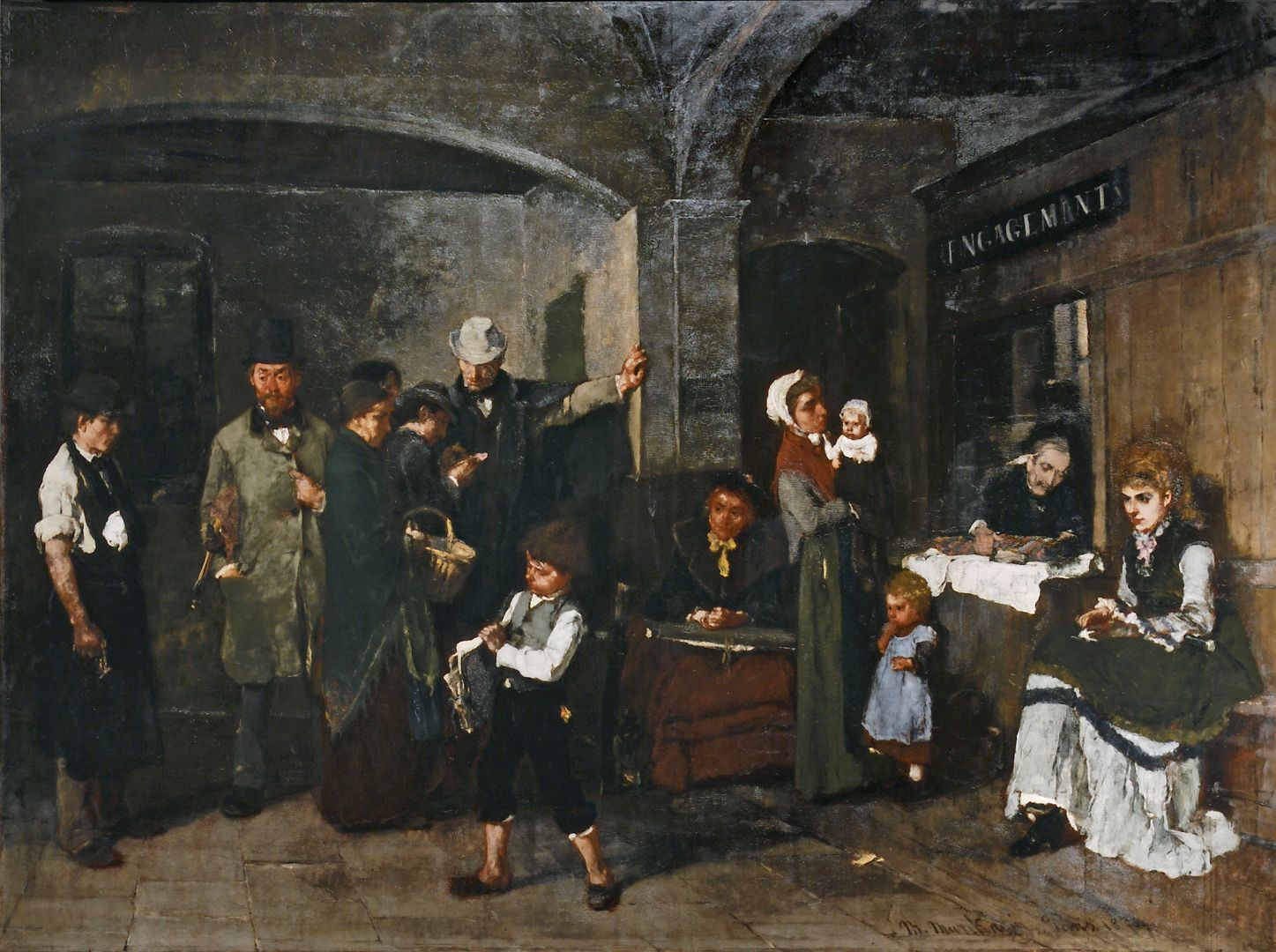Birth of a Legend: First Successes
THE PAWNBROKER’S SHOP
MUNKÁCSY Mihály
(1844–1900)
THE PAWNBROKER’S SHOP
1874
Oil on panel
Museum of Fine Arts – Hungarian National Gallery, Budapest
Inv. no. 99.12T
Munkácsy moved to Paris in the winter of 1871–1872; he created his most mature works here, including The Pawnbroker’s Shop, which is the first urban genre scene in Hungarian painting. Like The Condemned Cell, this work is also a social tableau – only this time the urban poor are the subject. The bohemian musician, the cocotte, the mother with her children, the child apprentice, the old dame – all of them typical characters of society – many of them had seen better days, are brought together by penury, neediness, or misfortune. Today, we can only imagine the original artistic beauty of the work: the dark bitumen ground – which once enhanced the dramatic effect of the painting with its contrasts – has led to the darkening of the picture. The Pawnbroker’s Shop was acquired for the collection of the Metropolitan Museum of Art in New York in 1887, where it featured for decades in the permanent exhibition.
